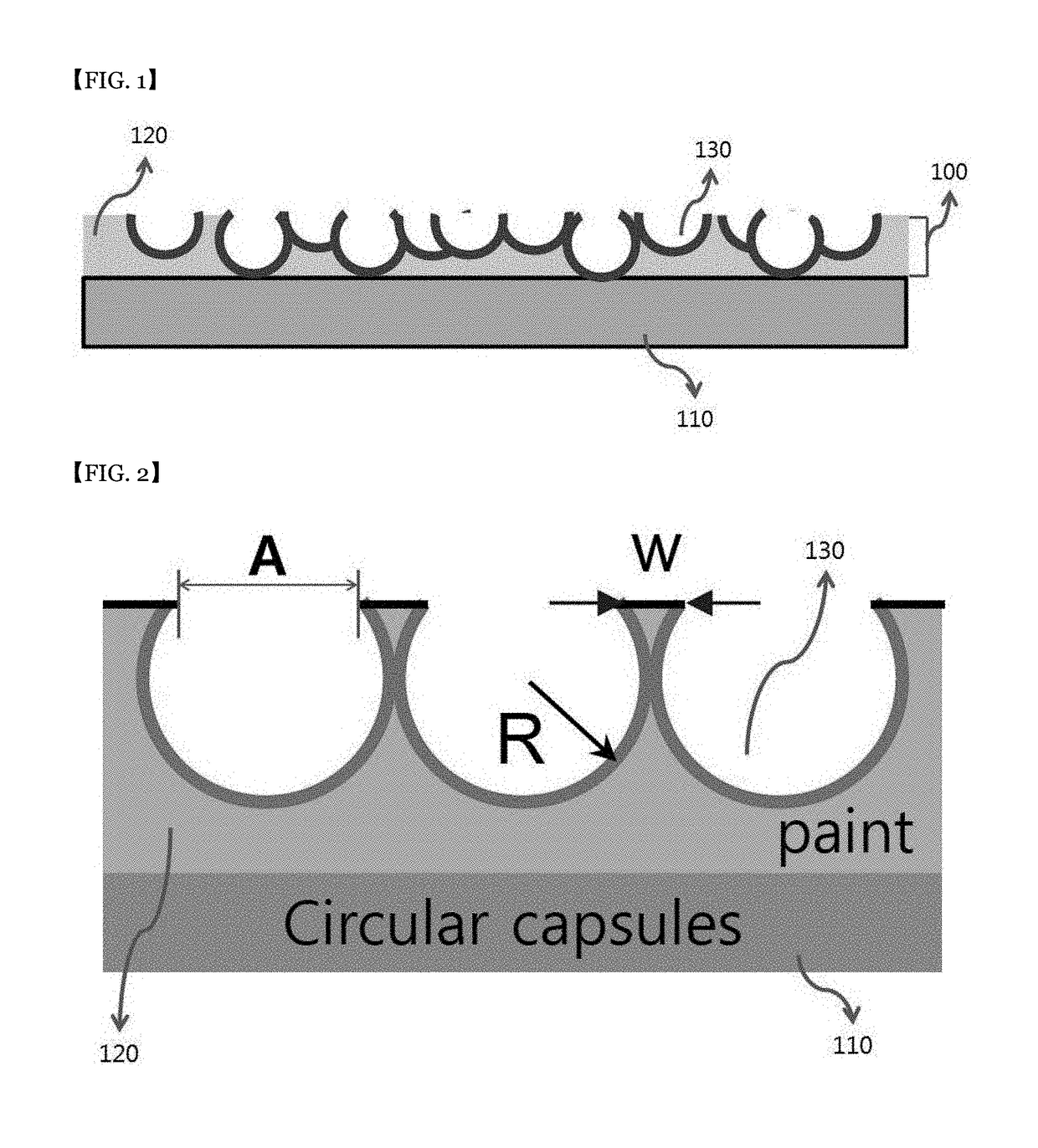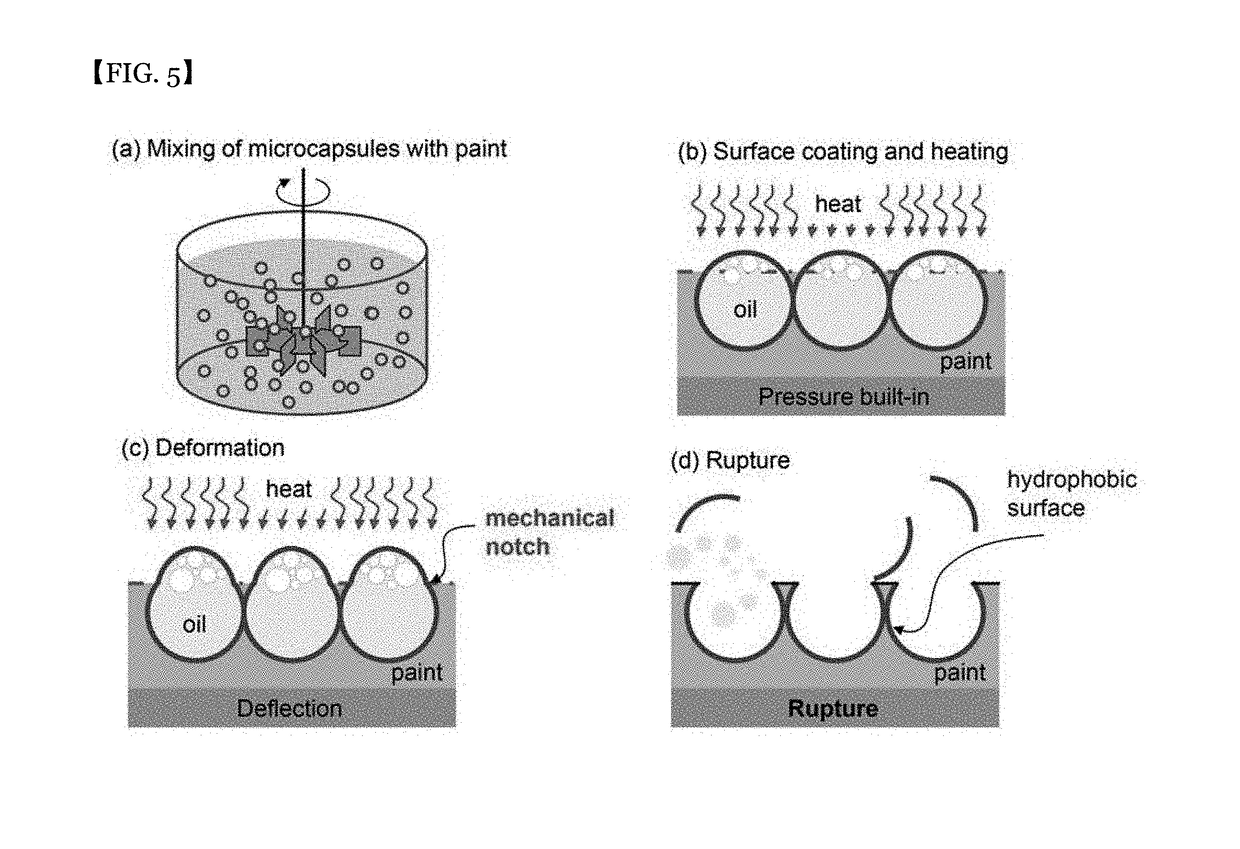Laminate for reducing flow resistance and manufacturing method therefor
a technology of flow resistance and laminate, applied in the direction of lubricant composition, mechanical equipment, coatings, etc., can solve the problems of environmental pollution, difficult to apply the same to a large area, microbial adhesion, etc., and achieve the effect of small shear force, excellent effect and superior cleaning
- Summary
- Abstract
- Description
- Claims
- Application Information
AI Technical Summary
Benefits of technology
Problems solved by technology
Method used
Image
Examples
example 1
[0053]The oil-contained micro-capsule and PVA (polyvinyl alcohol) were dispersed at a ratio of 1:1. The micro-capsules were well dispersed in the PVA. This capsule-dispersed PVA was spin-coated onto the silicon surface. The specific gravity of the oil was smaller than the specific gravity of the PVA, so that the micro-capsule floated toward the PVA surface, and the PVA was cured after a certain time. See the SEM picture of FIG. 6. As shown in the SEM photograph of FIG. 7, the shell of the micro-capsule was ruptured and a surface portion of the PVA having the partially opened micro-cavities was formed.
PUM
| Property | Measurement | Unit |
|---|---|---|
| flow-resistance | aaaaa | aaaaa |
| length | aaaaa | aaaaa |
| depth | aaaaa | aaaaa |
Abstract
Description
Claims
Application Information
 Login to View More
Login to View More - R&D
- Intellectual Property
- Life Sciences
- Materials
- Tech Scout
- Unparalleled Data Quality
- Higher Quality Content
- 60% Fewer Hallucinations
Browse by: Latest US Patents, China's latest patents, Technical Efficacy Thesaurus, Application Domain, Technology Topic, Popular Technical Reports.
© 2025 PatSnap. All rights reserved.Legal|Privacy policy|Modern Slavery Act Transparency Statement|Sitemap|About US| Contact US: help@patsnap.com



